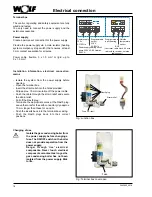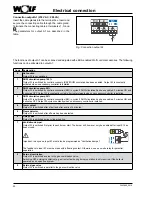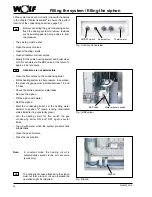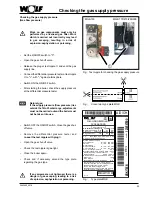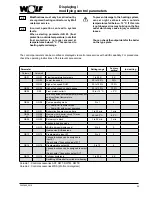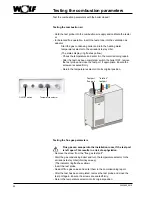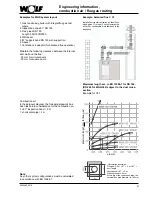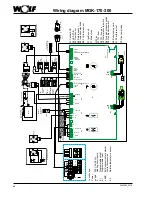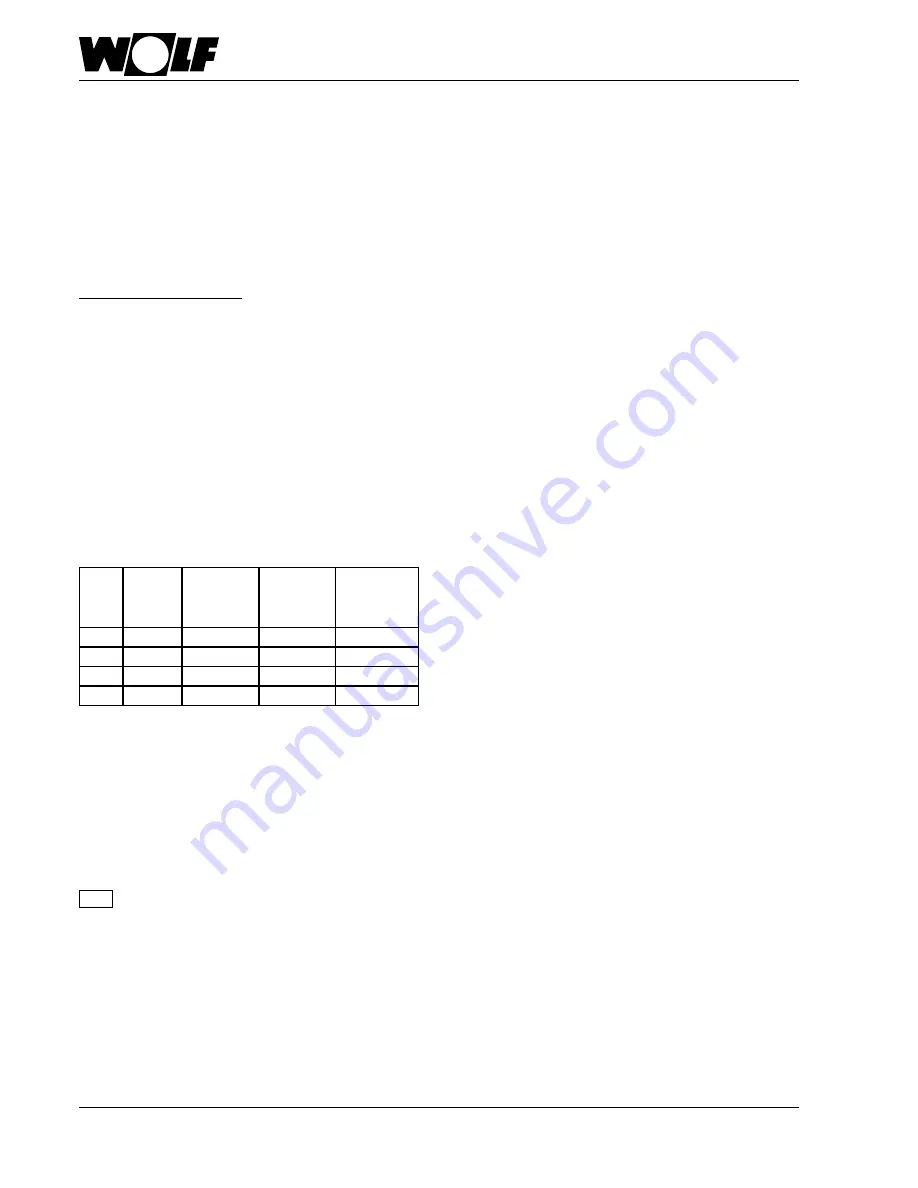
32
3062880_0910
Technical information, water treatment
The use of chemical additives and softening using
single-stage ion exchangers is not permissible.
Permissible methods:
- Desalination via mixed bed cartridges: These are multi-
stage ion exchangers. We recommend, for example,
using GD/GDE cartridges from Grünbeck for the first
fill, and later as and when required
- Desalination via reverse osmosis
- Topping up with distilled water
Treating the heating water
We recommend a heating water pH value of between 6.5
and 9.0, also in mixed installations comprising various
materials.
Request a water analysis from the water utility. This
must test whether the total hardness is sufficiently low.
With specific system volumes V
A, specific
greater than 20 l/
kW, apply the next lower limit value from the following
table.
For multi-boiler systems, the output of the smallest boiler
must be specified.
Table: Maximum permissible total hardness. This
corresponds to the total of alkaline earths.
* Alternatively, the installation of a filter or a separating
facility in the heating return would also be adequate.
The total hardness must not fall below
2 °dH.
Example:
System with a 170 kW boiler;
System volume V
system
= 4000 l
V
A, specific
= 4000 l / 170 kW = 23.5 l/kW
This is greater than 20 l/kW, therefore
Stage 3 must be selected. Both fill and
top-up water must be within the range of
2 to 8 °dH
.
NB
If the total hardness is too high, some of the fill and top-
up water must be desalinated.
A % desalinated water should be added:
C
max
Maximum permissible total hardness
in °dH
C
DHW
Total hardness of the untreated
DHW in °dH
We recommend allowing for the expected top-up water
during the first fill. Untreated DHW can then be added
later.
V
treatment
= A x (V
system
+ V
top-up
)
In large systems in stage 4, the top-up water should
not be taken into account during the first fill.
V
treatment
= A x (V
system
)
Example:
System output = 170 kW;
System volume V
system
= 4000 l;
Volume of top-up water
V
top-up
= 1000 l
Total hardness of the DHW C
DHW
= 18.5 °dH;
Maximum permissible total hardness C
max
= 8 °dH
A = 100% - [(8 - 0.1) / (18.5 – 0.1)] x 100% = 100%
- 42.9% = 57.1%
57.1%
of the fill and top-up water must be
desalinated.
V
treatment
= 57.1% x (4000 l + 1000 l) = 2850 l
When filling the system, 2850 l of desalinated
water must be added. The system can then be
topped up to V
max
with DHW.
When topping up, it is important to check regularly
that the permissible total hardness is not exceeded.
A = 100% – [(C
max
– 0.1 °dH) / (C
DHW
– 0.1 °dH)] x 100%
Stage
System
output
in kW
Permissible
total
hardness
C
max
in °dH
Permissible
total
hardness
C
max
in g/m³
Permissible
total hardness
C
max
in mmol/l
1*
up to 50
2 - 17
40 - 300
0.4 - 3
2
50-200
2 - 11
40 - 200
0.4 - 2
3
201-600
2 - 8
40 - 150
0.4 - 1.5
4
> 600
2 - 3
40 - 50
0.4 - 0.5

